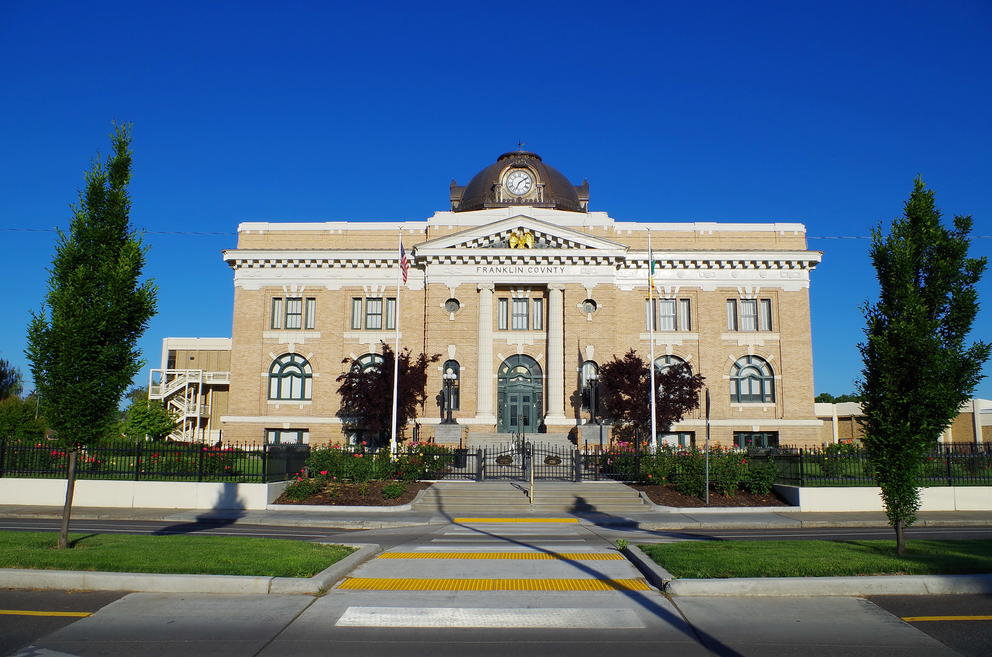The federal relief plan set out to ensure an “equitable recovery,” acknowledging the pandemic had exacerbated systemic inequities, and issued a call to action for towns and counties: Use this aid money to address those disparities.
As president of the Spokane-based Empire Health Foundation, Smith hopes to use those one-time resources to take on the region’s fast-growing homelessness crisis. The foundation recently convened a series of meetings with a coalition of service providers, advocates, business owners and government employees, crafting a pitch to local elected leaders for how to spend $65 million of ARPA funds to make a dent in an issue that only seems to be getting worse.
“[ARPA] represented this landmark investment that, if used right,” Smith said, “can make sustainable change at a local level across the country.”
But a U.S. Treasury Department rule change in January, intended to lower burdens on spending and provide small governments with more flexibility, has resulted in jurisdictions claiming billions of local ARPA dollars as “revenue replacement” — a broad, loosely restricted spending category that advocates say undermines ambitious public investments and transparency.
Other ARPA spending categories require officials to assign the money toward either mitigating negative economic impacts of COVID-19, utility infrastructure or bonuses for public employees. Federal rules require officials to closely track and publicly report expenditures. The newer Treasury change on revenue replacement dollars, however, allows qualifying small governments to direct up to $10 million into their general budgets for “government services” with reduced oversight.
Local officials argue stricter administrative rules could overwhelm small accounting departments. But Smith and other community advocates say they fear putting so much money – more than $752 million so far statewide – into “revenue replacement” squanders a historic chance at transformational change, reinforces status quo spending and cuts the public out of key discussions around the largest direct federal aid to local governments since the 1960s.
“The ability for governments to use [ARPA] for revenue replacement … is the best – or worst – way to diffuse those resources so that you never even see the impact,” Smith said.
Millions of dollars, few details
Passed in March 2021, the American Rescue Plan was pitched as an economic booster shot, meant to both hasten recovery in the short term and address the far-reaching impacts of the pandemic. It offered more than double the amount of direct aid to state and local governments ($350 billion) as the CARES Act, plus time and freedom rarely afforded by federal dollars, giving jurisdictions until 2024 to allocate and until 2026 to spend the money.
Eli Byerly-Duke, a senior research assistant at the Brookings Institution who works on their Local Government ARPA Investment Tracker, said that the aid program was designed to counteract what many Democratic lawmakers perceived as the shortcomings of the federal response to the 2008 economic crisis.
“There was a widespread sense after and during the Great Recession that too many working Americans paid the price of a big economic collapse that was not their fault, and that the recovery took too long to reach working people,” Byerly-Duke said. “Part of the takeaway that many had was that the federal government could have intervened more dramatically.”
This story is a part of Crosscut’s WA Recovery Watch, an investigative project tracking federal dollars in Washington state.
Cities and counties must submit annual reports on the direct funding to the U.S. Treasury, fitting their expenditures into one of four categories and describing each project funded with ARPA dollars. For many smaller jurisdictions, the first report came due April 30, and Treasury released a large batch of that data in mid-July. But instead of itemized reports, entities that designate funds as revenue replacement can now check “yes” to the $10 million allowance and report as much as they want – or nothing at all – about how that money will be spent.
Most Washington local governments have taken advantage of the new flexibility: Of 310 local governments in the state reporting expenses to the federal government, 267 governments, or 86%, had claimed the standard allowance, according to Treasury data. Of the nearly $2.7 billion in direct dollars to local governments in Washington, officials have so far claimed 28% as revenue replacement, totaling more than $752 million.
Of 21 counties that reported expenses under revenue replacement, a few provided detailed breakdowns of specific projects. Stevens County, in the northeast corner of Washington, submitted 16 reports detailing purchases as small as $4,000 for membership dues to the Association of Washington Counties.
But others provided brief, general descriptions of millions in spending.
Wahkiakum County reported "funds used for salaries and operational services." Franklin County submitted: "Funds to be used for various projects, priorities currently being identified." Yakima County just wrote: “Revenue Replacement Funds.”
The abbreviated reporting process leaves it up to local governments to decide how much information to offer their residents about ARPA spending.
Seattle has an interactive tracker that breaks down each line item. Kenmore has a webpage with pie charts, FAQs and a drop-down menu with details about each allocation. They also did an online poll where residents could vote on specific programs.
But many counties across the state lack even a basic public accounting of where ARPA dollars are going. Unless residents regularly attend legislative meetings, comb through budget documents, or request the information directly from their representatives, relief dollars can be spent more or less invisibly.
Crosscut filed records requests with over 30 counties in Washington seeking line by line accountings of their ARPA allocations. Some returned detailed spreadsheets with descriptions of each expenditure; others offered lists with phrases like “sheriff equipment” or “website upgrade.” (Those documents are available in Crosscut’s Recovery Watch Records Library.)
In some cases, county officials responded by citing revenue replacement without providing documents or offered minimal descriptions similar to those in the Treasury reports.
Benton County, which received $19.8 million from ARPA, did provide documents showing about $8 million in ARPA commitments. But multiple officials there consistently declined to say how the $10 million the county claimed in “revenue replacement” was being used.
In response to an email inquiry from Crosscut, Benton County spokesperson Shyanne Palmus wrote that the $10 million would be spent on “general government services … for county departments and functions.”
Shon Small, chair of Benton’s Board of County Commissioners, directed questions about the $10 million his county claimed in revenue replacement to Linda Ivey, the county’s finance manager, as did Benton County’s auditor. Ivey told Crosscut to file a records request, and did not reply to an emailed list of detailed questions about how the revenue replacement funds are tracked and allocated. An unsigned response to Crosscut’s records request indicated that the funds were deposited in the county’s general fund, but did not explain how they were spent.
Benton County’s website has no section dedicated to ARPA.
Transparency versus flexibility
Proponents of revenue replacement cast the additional flexibility as an essential part of empowering local governments to tailor their efforts to community needs. Jacob Ewing, legislative & policy analyst at the Association of Washington Cities, said smaller cities often lack the financial expertise or capacity to meet stricter compliance demands.
“There’s some of these towns where it’s literally one, not even one full-time employee – it’s one part-time employee that’s the clerk/treasurer,” Ewing said. “Figuring out how to use these funds, how to communicate with their city council, how to go about spending these dollars was definitely a challenge for them.”
Six Washington cities turned down or otherwise failed to claim the direct ARPA funds, in some cases citing the extra paperwork associated with federal auditing requirements.
The Treasury rule change in January followed congressional calls for increased flexibility on the funding. Sens. John Cornyn (R-Texas) and Alex Padilla (D-California) sponsored a bipartisan bill last year reducing the administrative burdens on the money. The bill never passed the House, but Treasury adopted a number of the provisions into its Final Rule on the spending.
A Treasury official wrote in an email to Crosscut that while revenue replacement allows for a “streamlined” reporting process, recipients are “still required to meet key reporting and document retention responsibilities, including submitting a description of services when reporting under ‘government services’ and retaining records detailing exactly how funds were spent in the event that an investigation or enforcement action is necessary.”
Missed opportunities
Byerly-Duke at Brookings said the additional flexibility offered by revenue replacement means local governments can decide to use the aid money to further equity and be responsive to community input – or not.
“What the revenue replacement dollars are most naturally set up to do is just to fund status quo government operations,” he said. “So in that sense, the revenue replacement encourages an equity-focused lens to the extent the recipient already had one.”
Franklin County Administrator Keith Johnson said his jurisdiction has so far focused ARPA funds on law enforcement and capital projects. About $8 million was committed to renovate a complex of buildings that houses the courthouse and jail, and about $700,000 went to the sheriff’s department to purchase a mobile command trailer, body armor, insurance, equipment and fuel (including $8,000 for new tasers and guns).
Johnson said the county created a business grant program that could indirectly help underserved communities, but didn’t target any ARPA funds specifically to social services.
“That has not been a priority for us under ARPA,” he said, “but we could use that and we’re still considering where we want to direct this spending that hasn't been decided yet.”
Find tools and resources in Crosscut’s Follow the Funds guide to track down federal recovery spending in your community.
Nonprofit leaders say officials must engage with local communities on how to spend revenue replacement if they want to meet the equity ambitions embedded in the American Rescue Plan. A recent report from the Southern Economic Advancement Project found just 20 of 44 Washington cities under review had specific equity strategies attached to their spending. They found clear community outreach efforts at just 17 of 52 Washington cities.
“Even though it’s voluntary, [the community’s] voice deserves to be at the table and deserves to be heard,” said Sarah Beth Gehl, executive director of SEAP. “The dollars might be harder to uncover if it’s revenue replacement or government services, and so it’s all the more necessary for community organizations, for organizers to be engaged and active in unpacking that and really pushing government officials to unpack that for the public.”
Smith of Empire Health said that so far two local governments – the cities of Spokane and Spokane Valley – have dedicated ARPA money to affordable housing. Though he welcomes those efforts, it’s a far cry from the coalition’s vision of a fundamental reshaping of the homeless response system.
Stretching the money imperceptibly to keep the system on autopilot, Smith said, misses the point of ARPA’s promise.
“The fear I have,” he said, “is that we miss this incredible opportunity to make a difference with a resource we’re not likely to see again.”
Get the latest investigative news
A newsletter for resources, data and behind-the-scenes insight into investigative efforts.







